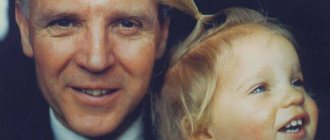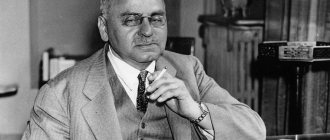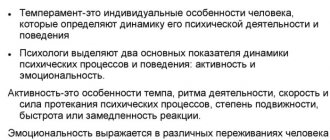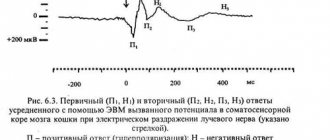About the authors.
Robert Frager
(Robert Frager) received his PhD in social psychology from Harvard University, where he taught and was an assistant to Erik Erikson. He has taught psychology at the University of California at Berkeley and Santa Cruz and is the founder and first president of the Institute of Transpersonal Psychology. He also served as president of the Association for Transpersonal Psychology. The author of several books and numerous articles on psychology and related fields, he is currently director of the doctoral program at the Institute of Transpersonal Psychology in Palo Alto, California.
“I have been fortunate to collaborate with many of the leading theorists and therapists whose work is highlighted in this book, and I have myself practiced Jungian analysis, Gestalt therapy, Reichian and neo-Reichian therapy, and Rogers group work. Additionally, I have lived in Zen monasteries, yogi ashrams, and Sufi centers, studying and practicing these traditions.
In addition to psychology, I teach the Japanese martial art of Aikido, which I have been practicing for over thirty years. He studied with the founder of the Aikido school. He was the first in a line of amazing mentors who taught me what Maslow called “expanding the limits of human nature.” I also lecture on Sufism and have recently completed a collection of Sufi stories, teachings and poems called Essential Sufism
(“The Essence of Sufism”).
I am married to an amazing, creatively gifted artist; We have four children who are now 27, 24, 13 and 10 years old."
James Fadiman
James Fadiman received his PhD in psychology from Stanford University and has taught at the University of San Francisco, Brandeis University, and Stanford. He has his own consulting firm that conducts seminars for executives and educators in the United States and abroad. He has written and edited a number of books on holistic medicine, goal setting, and pathopsychology, is the editor of two journals, and is a board member of several conservation corporations.
“I have been fortunate to be able to apply the psychological and clinical skills I acquired in graduate school to a variety of fields outside of psychology. Although I spent several years working at the college level and continue to teach psychology, most of my time was spent consulting with academics and business people. My early studies of altered states of consciousness allowed me to discover the hidden wisdom of indigenous and eastern cultures. I was delighted to discover that ancient wisdom can be extremely practical.
What inspired me in writing this book was that it gave me the opportunity to bring together different points of view that I found useful, even if the originators of those ideas were bitter opponents.
I'm currently running a creative problem solving and invention course at a large electronics firm in Silicon Valley, starting a second novel, continuing to write a number of short stories, and collaborating with several environmentally friendly start-up companies. production facilities.
My wife, to whom I have been married for thirty years, is a documentary filmmaker. We have two kids."
Karen Horney: Sociocultural Theory of Personality
Karen Horney, like Adler, Jung, Erikson and Fromm, followed the fundamental principles of Freud's theory. The most important issue on which she debated with Freud was the decisive role of physical anatomy in determining the psychological differences between women and men. Horney believed that Freud's statements about the psychology of women, especially his statements that women were driven by "penis envy", were illogical and tied to the culture of 19th century Vienna. Horney also objected to his theory of instincts and believed that psychoanalysis should adhere to a broader sociocultural orientation. In her works, Horney emphasized the importance of cultural and social influences on personality. Although her theory applies more to neuroses than to healthy individuals, many of her ideas have led to significant advances in the understanding of individual differences and interpersonal relationships.
Biographical sketch
Karen Horney, née Danielson, was born in Germany, near Hamburg in 1885. Her father was a sea captain, a deeply religious man, convinced of the superiority of men over women. Her Danish mother, an attractive and free-thinking woman, was 18 years younger than her husband. For most of Horney's childhood and adolescence, he was tormented by doubts about his worth, aggravated by a feeling of external unattractiveness. She compensated for her feelings of unworthiness by becoming an excellent student. She later admitted: “Since I couldn’t become beautiful, I decided to become smart” (Rubins, 1978, p. 14).
At the age of 14, Horney decided to become a doctor. The goal was achieved in 1906, when she entered the University of Freiburg and became the first woman in Germany to be allowed to study medicine. There she met Oscar Horney, a political science student, and married him in 1910. Horney received her medical degree from the University of Berlin in 1915. Over the next five years she studied psychoanalysis at the Berlin Psychoanalytic Institute. Almost all this time, Horney suffered from severe bouts of depression and once, as her biographers report, she was saved by her husband while attempting suicide (Rubins, 1978).
By 1926, Horney's marriage began to crumble as her personal problems mounted. The sudden death of her brother, the divorce of her parents and their death within one year, growing doubts about the value of psychoanalysis - all this led her to a completely depressed state. However, after divorcing her husband in 1927, she began to have a successful career as a psychiatrist. She worked at the Berlin Psychiatric Institute and was very passionate about teaching, writing scientific papers and traveling.
In 1932, during the Great Depression, Horney moved to the United States. She was hired as assistant director at the Chicago Psychoanalytic Institute. Two years later she moved to New York, where she lectured at the New York Psychoanalytic Institute. Her increasing divergence from Freudian doctrine led the institute to disqualify her as an instructor in psychoanalysis in 1941. Shortly thereafter, she founded the American Institute of Psychoanalysis. Horney served as dean of the institute until her death from cancer in 1952.
Sociocultural theory: basic concepts and principles
The impetus for the formation of a sociocultural view of personality was Horney’s three main considerations. First, she rejected Freud's statements about women and especially his assertion that their biological nature predetermines penis envy. This was the starting point in her divergence from the orthodox Freudian position. Secondly, during her stay in Chicago and New York, she exchanged views with such outstanding scientists as Erich Fromm, Margaret Mead and Harry Stack Sullivan. They strengthened her conviction that sociocultural conditions have a profound influence on the development and functioning of the individual. Third, her clinical observations of patients she treated in Europe and the United States showed striking differences in their personality dynamics, providing evidence for the influence of cultural factors. These observations led her to the conclusion that unique interpersonal styles underlie personality disorders.
Personal development
Horney agreed with Freud's views on the importance of childhood experiences in shaping the structure and functioning of adult personality (Horney, 1959). Despite the commonality of basic positions, both scientists disagreed on the issue of the specifics of personality formation. Horney did not accept Freud's assertions about the existence of universal psychosexual stages and that the sexual anatomy of the child dictates a certain direction of further personality development. According to her beliefs, the decisive factor in personality development is the social relationship between the child and parents.
According to Horney, childhood is characterized by two needs: the need for satisfaction and the need for security (Horney, 1939). Satisfaction covers all basic biological needs: food, sleep, etc. Although Horney emphasized the satisfaction of physical survival needs, she did not believe that they played a major role in the formation of personality. The main thing in a child’s development is the need for safety. In this case, the underlying motive is to be loved, desired and protected from danger or a hostile world. Horney believed that the child was completely dependent on his parents to satisfy this need for security. If parents show true love and warmth towards their child, their need for security is thereby satisfied. Thanks to this, a healthy personality is most likely to be formed. Conversely, if parental behavior interferes with the satisfaction of the need for security, pathological personality development is very likely. Many aspects of parental behavior can frustrate a child's need for security: erratic, erratic behavior, ridicule, broken promises, overprotectiveness, and obvious preference for siblings (Horney, 1945). However, the main result of such mistreatment by parents is the development in the child of an attitude of basal hostility. In this case, the child finds himself between two fires: he depends on his parents and at the same time experiences feelings of resentment and indignation towards them. This conflict triggers defense mechanisms such as repression. As a result, the behavior of a child who does not feel safe in the parental family is guided by feelings of helplessness, fear, love and guilt, which serve as psychological defense, the purpose of which is to suppress hostile feelings towards parents in order to survive (Horney, 1950, p. 18).
Unfortunately, the repressed feelings of resentment and hostility that are caused by parents do not exist on their own: they manifest themselves in all the child’s relationships with other people, both in the present and in the future. In such a case, the child is said to have basic anxiety, “a feeling of loneliness and helplessness in the face of a potentially dangerous world” (Horney, 1950, p. 18). Basic anxiety, an intense and pervasive feeling of insecurity, is one of Horney's fundamental concepts.
Basal anxiety: etiology of neuroses
Unlike Freud, Horney did not believe that anxiety was a necessary component in the human psyche. Instead, she argued that anxiety results from a lack of security in interpersonal relationships. In general, according to Horney, everything in a relationship with parents that destroys a child’s sense of security leads to basic anxiety. Accordingly, the etiology of neurotic behavior should be sought in the disturbed relationship between the child and the parent. As you remember, if a child feels loved and accepted, he feels safe and is more likely to develop normally. On the other hand, if he does not feel safe, he will develop hostility towards his parents, and this hostility, eventually transformed into basic anxiety, will be directed at everyone. From Horney’s point of view, pronounced basal anxiety in a child leads to the formation of neurosis in an adult.
Neurotic needs: strategies to compensate for basal anxiety
To cope with the feelings of insecurity, helplessness and hostility inherent in basal anxiety, the child is often forced to resort to various protective strategies. Horney described ten such strategies, called neurotic needs, or neurotic tendencies (Horney, 1942). They are presented in the following table:
| Excessive demand | Manifestations in behavior |
| 1. In love and approval | An insatiable desire to be loved and admired by others; increased sensitivity and susceptibility to criticism, rejection or unfriendliness. |
| 2. In the managing partner | Excessive dependence on others and fear of rejection or being alone; overestimation of love - the belief that love can solve everything. |
| 3. Within clear limits | Preferring a lifestyle in which restrictions and routine are of paramount importance; undemandingness, contentment with little and subordination to others. |
| 4. In power | Dominance and control over others as an end in itself; contempt for weakness. |
| 5. Exploiting others | Fear of being used by others or of looking "dumb" in their eyes, but unwilling to do anything to outsmart them. |
| 6. In public recognition | Desire to be admired by others; self-image is formed depending on social status. |
| 7. Admiring yourself | The desire to create an embellished image of oneself, devoid of flaws and limitations; the need for compliments and flattery from others. |
| 8. In ambition | A strong desire to be the best, regardless of the consequences; fear of failure. |
| 9. In self-sufficiency and independence | Avoidance of any relationship that involves taking on any obligations; distancing from everyone and everything. |
| 10. In perfection and irrefutability | Trying to be morally infallible and blameless in every way; maintaining an impression of perfection and virtue. |
Horney argued that these needs are present in all people.
They help cope with feelings of rejection, hostility and helplessness that are inevitable in life. However, a neurotic, reacting to various situations, uses them inflexibly. He forcibly relies on only one of all possible needs. A healthy person, on the contrary, easily replaces one with the other if changing circumstances require it. For example, when the need for love arises, a healthy person tries to satisfy it. When the need for power arises, he also tries to satisfy it and so on. Horney explains that a neurotic, unlike a healthy person, selects one need and uses it indiscriminately in all social interactions. “If he needs love, he must get it from friend and foe, from employer and shoeblack” (Horney, 1942, p. 39). In short, a need definitely has a neurotic character if a person tirelessly tries to turn its satisfaction into a way of life. Orientation towards people, from people and against people
In her book Our Inner Conflicts (1945), Horney divided her list of ten needs into three main categories. Each of the categories represents a strategy for optimizing interpersonal relationships in order to achieve a sense of security in the world around us. In other words, their effect is to reduce anxiety and achieve a more or less acceptable life. In addition, each strategy is accompanied by a certain basic orientation in relationships with other people.
People Oriented: Compliant Type
. People orientation involves a style of interaction characterized by dependence, indecisiveness, and helplessness. The person Horney classifies as the compliant type is driven by the irrational belief: “If I yield, I will not be touched” (Horney, 1937, p. 97).
The compliant type needs to be needed, loved, protected and led. Such people enter into relationships with the sole purpose of avoiding feelings of loneliness, helplessness, or uselessness. However, their politeness may mask a repressed need to behave aggressively. Although such a person appears to be embarrassed in the presence of others and keeps a low profile, this behavior often hides hostility, anger, and rage.
People Orientation: Separate Type
. Orientation from people as a strategy for optimizing interpersonal relationships is found in those individuals who adhere to the defensive attitude: “I don’t care.” Such people, whom Horney classifies as the detached type, are guided by the mistaken belief: “If I withdraw, I will be all right” (Horney, 1937, p. 99).
The isolated type is characterized by the attitude of not allowing oneself to be carried away in any way, whether it is a love affair, work or leisure. As a result, they lose true interest in people, get used to superficial pleasures - they simply go through life dispassionately. This strategy is characterized by a desire for privacy, independence and self-sufficiency.
Anti-People Orientation: Hostile Type
. Anti-people orientation is a style of behavior characterized by dominance, hostility and exploitation. The hostile person acts from the illusory belief: “I have power, no one can touch me” (Horney, 1973, p. 98).
The hostile type holds the view that all other people are aggressive and that life is a struggle against everyone. Therefore, he considers any situation or relationship from the position: “What will I get from this?”, regardless of what we are talking about - money, prestige, contacts or ideas. Horney noted that the hostile type is capable of acting tactfully and friendly, but his behavior is ultimately always aimed at gaining control and power over others. Everything is aimed at increasing one’s own prestige, status or satisfying personal ambitions. Thus, this strategy expresses the need to exploit others and gain social recognition and admiration.
Like all 10 neurotic needs, each of the three interpersonal strategies is designed to reduce feelings of anxiety caused by social influences in childhood. From Horney's point of view, these are fundamental strategies in interpersonal relationships that each of us uses at some time. Moreover, according to Horney, all these three strategies are in conflict with each other in both a healthy and a neurotic person. However, in healthy people this conflict does not carry such a strong emotional charge as in patients with neuroses. A healthy person is characterized by great flexibility, he is able to change strategies according to circumstances. And the neurotic is unable to make the right choice between these three strategies when he solves problems that confront him or builds relationships with others. He uses only one of three coping strategies, whether it is suitable in this case or not. It follows from this that a neurotic person, compared to a healthy person, behaves less flexibly and is not as effective in solving life problems.
Psychology of women
As mentioned above, Horney disagreed with almost every statement Freud made regarding women (Horney, 1926). She completely rejected his view that women envied men's penises and blamed their mothers for not having this organ. She also considered Freud's opinion, which argued that a woman unconsciously strives to give birth to a son and thus symbolically gain a penis, to be erroneous. Horney protested against this demeaning view of women in her discussion of men's womb envy, which expresses men's unconscious jealousy of women's ability to bear and feed children. Finally, Horney concluded that psychoanalysis was created by “a male genius, and almost all who developed the ideas of psychoanalysis were men” (Horney, 1926/1967, p. 54). It should be noted that Horney's opposition to Freud's views on women caused much controversy at the time. She was disqualified as an instructor in psychoanalysis and eventually removed from this predominantly male scientific field. However, as the first major feminist, she did more than simply criticize Freud. She put forward her theory of the psychology of women, containing a new perspective on the differences between men and women in the context of sociocultural influences.
Horney insisted that women often felt inferior to men because their lives were based on economic, political and psychosocial dependence on men. Historically, women have been treated as second-class creatures, denied equal rights to men, and raised to accept male “superiority.” Social systems, with their male dominance, constantly make women feel dependent and inadequate. Horney argued that many women strive to become more masculine, but not out of penis envy. She viewed women's "overestimation" of masculinity as a manifestation of a desire for power and privilege.
“The desire to be a man may express the desire to possess all those qualities or privileges which our culture considers masculine - such as strength, courage, independence, success, sexual freedom, the right to choose a partner” (Horney, 1939, p. 108).
Horney also drew attention to the role contrasts that many women suffer in relationships with men, particularly highlighting the contrast between the traditional female role of wife and mother and more liberal roles such as choosing a career or pursuing other goals (Horney, 1926/1967). She believed that this role contrast explains the neurotic needs that we can see in women in love relationships with men.
Horney's ideas, emphasizing the importance of culture and sex roles, fit well with today's feminist worldview (Westcott, 1986). Horney welcomed the rapid changes in role behavior and gender relations observed in modern society. Her numerous articles on the psychology of women are often cited by modern researchers.
Final comments
Horney's theory is based almost entirely on clinical observations. Her explanation of neuroses as manifestations of broken relationships, accompanied by descriptions of clinical cases, can be considered the most significant contribution to modern personality theory. However, Horney's interest almost exclusively in the clinical manifestations of neuroses, in pathology, significantly reduces the scope of her theory. To Horney's credit, she always strived for precision and clarity in her discussions of the causes and development of neuroses. Her thoughts also convey an optimistic view of humanity, based on the belief that every person has the capacity for positive personal growth.
Unfortunately, in the literature devoted to experimental research there is no direct evidence of its concepts or refutations. But despite this, her theoretical and clinical ideas have a huge response. She wrote a lot specifically for people without professional training in this field, and her books are very popular today. Horney's approach to personality is thus of more than just historical interest.
Scientific works
In conclusion, Karen Horney's significant work, which has received universal recognition, should be noted. This includes atypical research collections: “Neurosis and personal growth. The struggle for self-realization”, “Our internal conflicts. Constructive theory of neurosis". Neo-Freudian views are well reflected in the books: “New Paths in Psychoanalysis”, “Psychology of Women”, “Neurotic Personality of Our Time”. A woman reveals all facets of personality theory in an accessible and easy-to-understand language.
Karen Horney summarized that the main goal of psychotherapy and psychoanalysis is not only to study theory, but also to provide effective help to the person. Helping an individual find the levers and main facets of self-knowledge, expand his own perception and eliminate the formation of uncertainty, isolation or any type of aggression is the main task of a real psychoanalyst. The simple conclusion turned out to be a new and fresh view in the 20th century, which significantly influenced the development of psychoanalysis as a whole.










